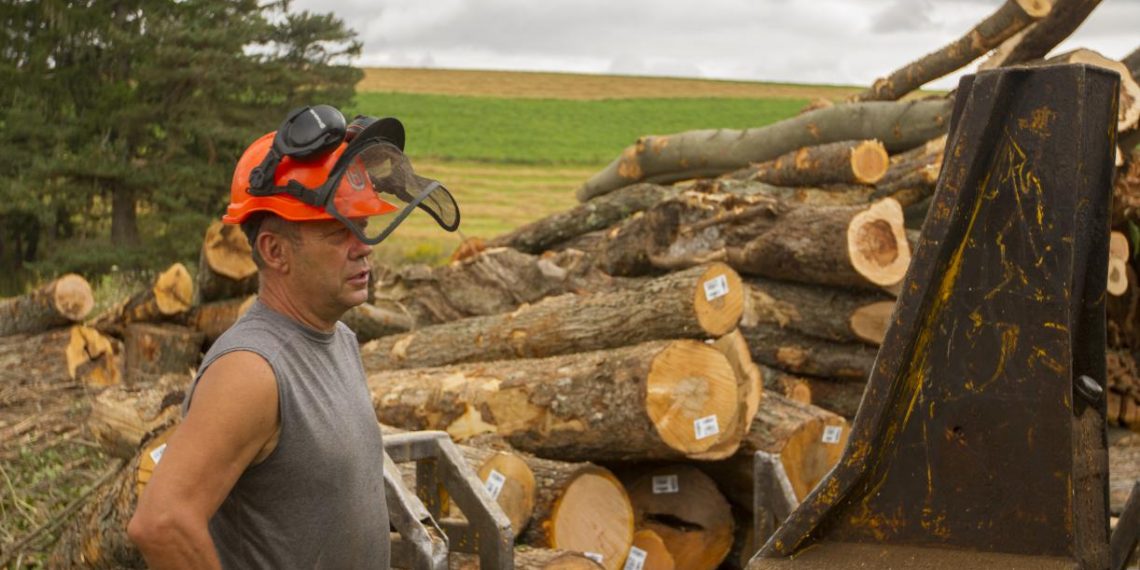In some tropical countries, illegal logging accounts for the majority of forest clearing, threatening economies, livelihoods, ecosystems and contributing to climate change. To combat illegal logging and close markets to illegally sourced timber, tropical timber-producing countries around the world are developing national timber tracking systems.
Robust timber tracking systems help governments formalize the forest sector by improving the collection of taxes, fees, and royalties. In Ghana, for instance, a recent analysis found that the implementation of the country’s timber tracking system helped authorities collect stumpage fees and export taxes.
Traceability also suppresses the supply of cheap, illegal timber, clearing the way for legal operators to invest in sustainable forest management. More broadly, traceability systems support compliance with and enforcement of national laws, and helps businesses demonstrate that compliance. While such systems bring reporting requirements for the private sector, they can support business operation management to optimize production and control product quality, making domestic and international markets more competitive. Greater control over timber supply chains — especially pre-forest management operations — can also support sustainable forest management.
Developing these systems is a complex task. A new report unpacks lessons and best practices for governments developing and implementing timber tracking systems.1
What Efforts to Track Timber Flow Look Like
Legislation in timber-importing countries — from the U.S. Lacey Act to the European Union Timber Regulation2 — has increased demand for traceable timber, requiring importers to prove their timber purchases are legal and government agencies to regulate the sector and improve management of natural resources. In response, many countries have made considerable efforts to develop national systems that track timber flow from producer through processing to the point of sale and the final consumer.
Timber supply chains are complex and fragmented, often spanning different jurisdictions and regulated by multiple government agencies. And the changes in operations and logistics these systems bring can require significant financial and labor investments by the private sector, so governments can face resistance from stakeholders, particularly when private sector actors lack the capacity to use the system.
Governments across Latin America have proactively developed and implemented traceability systems that leverage technologies and equipment to meet the unique needs within each country’s forest sector. A recent report from WRI and the FAO-EU Forest Law Enforcement, Governance and Trade Programme, “Timber Traceability: A Management Tool for Governments Case Studies from Latin America,” documents experiences in the region. Drawing from work in Brazil, Colombia, Ecuador, Guatemala, Honduras, Panama and Peru, the report offers lessons and best practices in the the planning of government-led timber traceability systems.
Here are five key recommendations for developing and rolling out timber tracking systems:
- Stakeholder and user buy-in is key. In Guatemala, during the first two years of implementation of the traceability system, the forest authority conducted exhaustive dialogues and trainings with stakeholders to address users’ concerns and then modified the system based on this feedback. This engagement helped secure users’ buy-in over time. As a result, because the system is widely used, its data has been used by Guatemala’s government to benchmark and monitor the implementation of the country’s Forest Investment Plan, which facilitated access to finance for land use planning and responsible forest management.
- Implementing in phases makes the process more manageable. In Colombia, the national tracking system includes four main modules, and the forest authority is implementing it in phases. The transportation module was rolled out first because it is a relatively straightforward process involving direct interactions between companies and environmental authorities. The trade and harvesting modules were implemented next because the tools in these two modules are similar. The forest planning module was introduced last because it involves more authorities. This phased approach allows authorities to pilot the system, raise awareness, train users, test applicability and feasibility, and navigate and account for users’ concerns.
- Implementing timber traceability systems can involve significant effort and investment. It requires stakeholder engagement and capacity building and sometimes changes in the legal framework. Some of these systems have been in development for years: in Guatemala, the groundwork of the tracking system started in 2013; in Peru around 2014, and in Colombia in 2015. However, creating an enabling environment — one with an appropriate legal framework, well-defined inter-agency processes for collaboration, and substantial communication and consultation with users — is critical to ensure a successful implementation process and widespread uptake.
- While technological advances can seem powerful and appealing, traceability systems should be developed using approaches that are realistic and affordable for the country. Systems need to be realistic and suit the capacity of users to ensure their widespread use. In Guatemala, for example, the control books — the tools used to track the volumes processed — are based on an Excel template, a tool widely used by forest companies, reducing the need for additional capacity building or training.
- Civil society organizations can play an important and complementary role. In Brazil, organizations like BVRio Institute and Imaflora take government timber traceability information and make it available to international buyers through online platforms. This helps buyers assess the legal origin of the timber they purchase. In doing so, these organizations facilitate the trade of legal forest products.
Traceability Systems are Here to Stay, But More Work is Needed
While countries in Latin America have made good progress in establishing timber traceability systems, more needs to be done. The traceability systems featured in the report are in varying degrees of development, and work remains for them to become self-sustaining. Additionally, forest authorities in charge of timber traceability systems are often relatively weak compared to other government agencies. To successfully implement traceability systems, forest authorities need the support of high-level political will, a solid legal and regulatory framework and enough financial support — including from national governments and international organizations.
Finally, timber traceability systems are never complete. Even when they are fully implemented, systems need to be continuously improved to prevent obsolescence and to stay ahead of efforts to find loopholes that undermine the system. Designing a long-term strategy for continuous updates and financial sustainability in the pre-planning phase is critical.
Demands for traceability are here to stay, and a growing number of governments across the globe are seeking to develop and implement timber traceability systems. As they do this, they can look to Latin America and the traceability systems that are being implemented. Drawing from the lessons and best practices emerging in the region, governments are well placed to meet international demands for legally verified timber and to boost local, regional and national economies. Tracking systems bring transparency to timber supply chains. This, along with the information that can be compiled and analyzed in these systems, is critical to better manage forest resources and prevent illegal logging and illegal deforestation.
ENDNOTES:
1 This report builds on a previous FAO-EU FLEGT program focusing on traceability systems in Africa.
2 Other countries implementing these types of legislation include Australia, Japan, Switzerland, New Zealand, Malaysia, Vietnam, and Korea.



